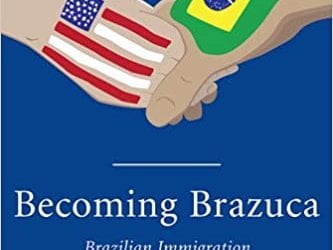Plan Caracas, 1974-1976
(revisited)

Billboards and tall buildings dominate the Caracas skyline. Photo courtesy of Urban Think Tank.
Densely populated shantytowns grow organically in the hills around Caracas. But I don’t practice sociological tourism. This text is more about the self-explanations of a Caracas-born son of immigrants. Immigration in this sense can be seen as a slower and more pragmatic form of tourism.
My parents’ families arrived to Caracas between the 30s and the 50s, when global populations were reacting to the convulsion generated by World War II. They found urban and economic modern trends that were developing at the rhythm of petrodollars. The global convulsion depressed some old countries but raised economical tides in the rural Venezuela, which was trying to catch up with the most progressive ideas of the time.
The Americas’, and hence also Venezuelan, economical and technological trends forced political changes that promised a more inclusive and egalitarian society. Peasants from the Venezuelan countryside, as well as Italian and Lebanese (in my parents case) flooded Venezuela’s urban centers, looking for ”progress”—the kind of progress that canonical modernity promised in all realms of human—or urban—life.
But then, I ask myself, why are ranchos still omnipresent today? These modern adaptations of pre-colonial and colonial elemental constructions suffocate and confront the more canonical modern ecosystem that architects, builders and urban planners have wanted to implant since colonizers first arrived. The implantations and adaptations of the also always evolving models of canonical modernity had their last powerful surge during a period of major economic change during the 40’s and 50’s.
These modern constructions were meant to replace the rural pre-colonial and colonial elemental dwellings and settlements sprouting all around Caracas with the most recent European developments in urban planning and multi-family types of housing. Brilliant Venezuelan architects and artists adapted the model. The cultural gap was beginning to be leveled in several ways. However, international economic and political changes once again overran the process, disrupting the continuity of governmental policies and priorities. The public housing boom and its local developments and sustainability did not mach the political will of the following governments. That’s probably why some people refer to it now as a utopian endeavor.
The fact is that the 60s were not very oriented to massive housing urban developments that were to replace the ranchos; these, meanwhile, were multiplying and assimilating the technology and materials of modern construction to become more resistant to the elements and, curiously enough, they grew by several floors.
During the seventies international politics and economics brought another sudden change. This time nobody wanted to obliterate the rancho—nobody could, anyway.
Plan Caracas was the first documented governmental effort to ‘consolidate’ the infrastructure and design of resilient ranchos conforming shantytowns in the evolving metropolis.
Only two projects, documented in two brochures, were finished: La Vega and Los Manolos, the popular names for these urban developments.
All these projects coincided with the nationalization of the oil industry and the enormous influx of money coming from the global oil crisis in 1973. The parallel between the rhetoric portraying the oil as property of the Venezuelan people and the fact that only two consolidation projects of this nature were completed shows how the disruption of this initiative of redistribution of wealth may in turn reveal how the government uses architecture, photography and finally the graphic image as demagogic propaganda.
Therefore the manipulation and circulation of the images of poor people and its architecture becomes an issue. Furthermore, when this political strategy is repeatedly used for decades and by all politicians independently of their ‘ideological’ stands, it becomes an evident instrumental manipulation of the image that ends up by canceling its effectiveness to certify any social, political and cultural reality.
Urban social realism (seen in this images of the 70’s) was no longer sponsored by the government that shifted towards more abstract forms of representation of progress. Cinetismo (an abstract mix between Optical an Kinetic Art) was definitively embraced as the metaphor of national energy production and cultural progress, designated to decorate other kinds of governmental projects, not public housing.
While the ranchos and its culture kept sprawling, the political system was dissolved by its own cynicism, and some economical and social factors essayed a radical change in 1998. Ten years after, the urban ranchos are still there as much as the structural inequalities that generated them in the first place.
Related Articles
A Review of Becoming Brazuca: Brazilian Immigration to the United States
Trying to define the community of Brazilian descendants who studied at Harvard University between 2001 and 2005, when I attended the college, was a maddening exercise. Some Crimson Brazucas—or Brazilian immigrants in the United States—affiliated with the broader community of Latino immigrants and participated in Concílio Latino or the annual pan-Latin cultural show, Presencia Latina (which I co-founded in 2002) …
Making a Difference: Taking on Tropical Diseases
Harvard School of Public Health (HSPH) students, along with their Brazilian counterparts, spent January studying and devising ways to control two tropical diseases endemic in Brazil: visceral leishmaniasis (VL) and schistosomiasis. During two intensive weeks in Brazil, students explored the epidemiological, biological, and clinical characteristics of selected infectious diseases, as well as the social, cultural, economic, and …
Collecting Orchids In the Venezuelan Orinco-Amazon Interfluvium
Orchidaceae are by far the largest family of all flowering plants, with species occurring all over the planet except in its very coldest and driest habitats. However, as is the case with most other living organisms, orchids are not evenly distributed. Most species grow in the tropics; as we approach the poles, their numbers diminish rapidly. The United States and Canada, for example, have approximately 208 species, Mexico, some 1250 species …




